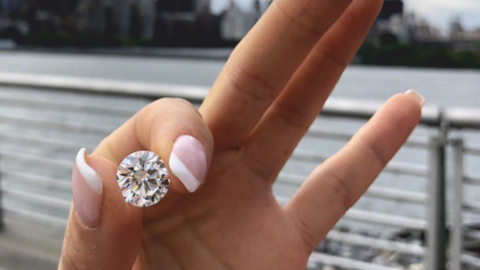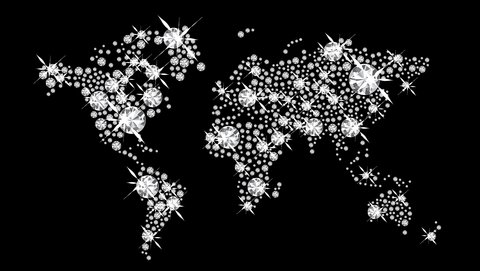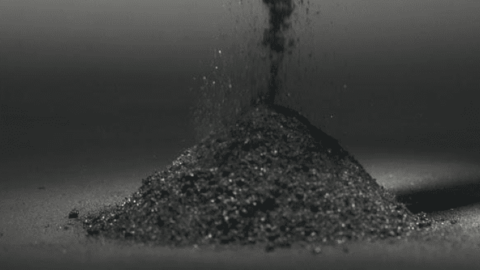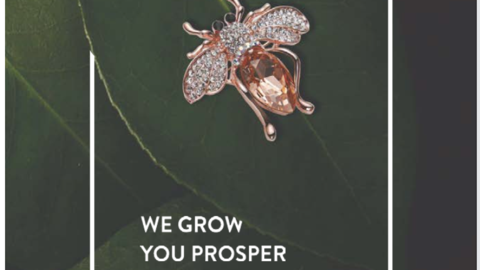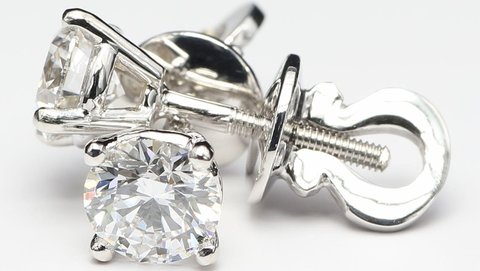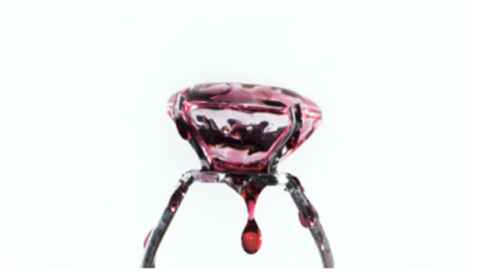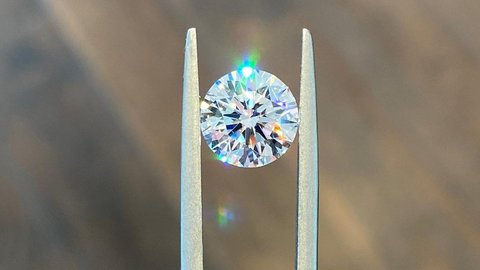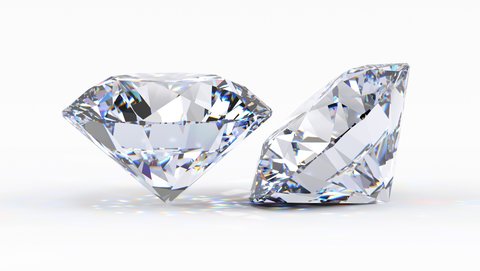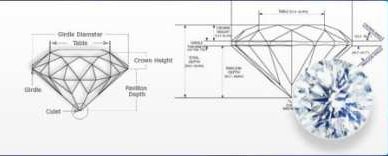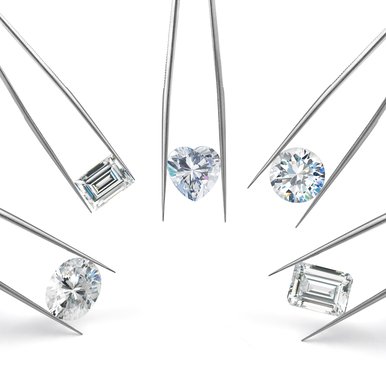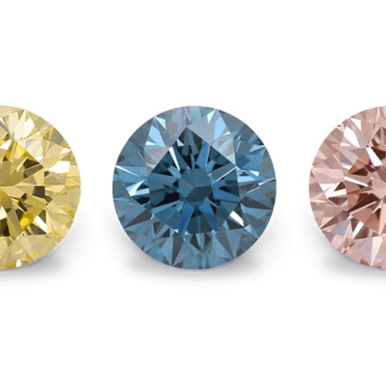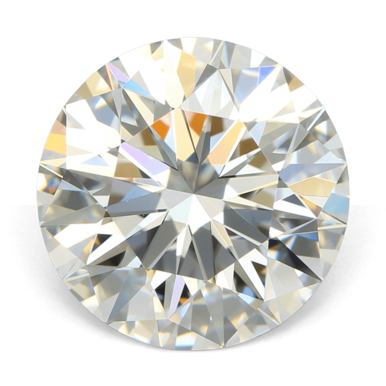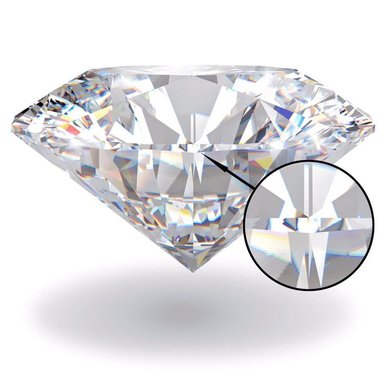Best Places to Buy Lab Diamonds: Expert Guide 2024
Author: Alex K., CMO at Labrilliante Updated: 2025-10-03 Reading Time: 8 minutes
Lab diamond retailers offer 60-80% savings versus natural stones through specialized IGI certification and direct manufacturer partnerships. CVD technology produces 85% near-colorless grades while HPHT delivers larger carats faster. Smart buyers focus on VS2/F-G specifications during off-peak seasons for maximum value.
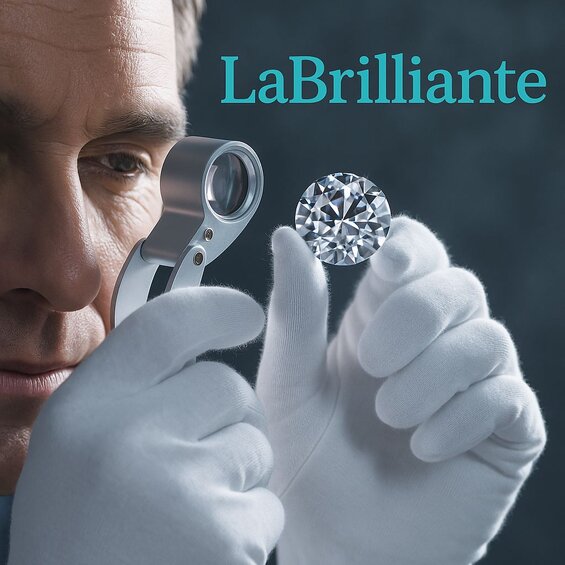
The lab-grown diamond market exploded from $200 million to over $12 billion in just five years, fundamentally reshaping how couples approach engagement ring shopping. Smart consumers now navigate complex choices between CVD and HPHT manufacturing, IGI versus GIA certification standards, and dozens of online retailers promising the best deals. This comprehensive guide reveals insider strategies for identifying premium lab diamond sources, avoiding common certification pitfalls, and securing exceptional value through technical buying criteria. You'll discover which retailers offer genuine manufacturer partnerships, how seasonal trends affect pricing by 15%, and why specific quality combinations deliver maximum brilliance per dollar spent.
Why Natural Diamonds Still Dominate Premium Markets
Traditional jewelers and luxury consumers argue that lab diamonds lack the geological rarity and emotional significance that justify premium pricing for milestone purchases. Natural diamond advocates point to billion-year formation stories and finite supply as irreplaceable value propositions that laboratory creation can never replicate. High-end retailers report that clients spending $10,000+ still overwhelmingly choose mined stones for proposals and anniversaries.
This preference holds merit in luxury segments where symbolic meaning outweighs technical specifications. Natural diamonds maintain stronger resale values and broader acceptance among traditional families and cultures. However, for the majority of buyers prioritizing visual beauty, ethical sourcing, and financial value, lab diamonds deliver identical optical performance at revolutionary price points. The choice ultimately depends on whether you're purchasing a symbol steeped in geological romance or a stunning gemstone optimized for brilliance and value.
Master IGI Certification Standards for Lab Diamond Quality
IGI certified lab diamonds undergo comprehensive grading that specifically addresses lab-grown characteristics, making them the preferred certification for synthetic stones. The International Gemological Institute developed specialized protocols for Chemical Vapor Deposition and High Pressure High Temperature diamonds that differ significantly from traditional natural diamond grading.
| Certification Body | IGI | GIA | GCAL |
|---|---|---|---|
| Lab Diamond Specialization | Purpose-built for lab-grown diamonds | Natural diamond standards adapted | Performance metrics focused |
| Growth Method Identification | CVD/HPHT clearly marked | Laboratory-grown noted | Full technological analysis |
| Grading Approach | Conservative on CVD near-colorless | Stricter VS1-VS2 clarity standards | Comprehensive performance evaluation |
| Processing Time | 7-10 business days | 10-14 business days | 14-21 business days |
| Certification Cost | $85-$125 | $95-$150 | $150-$250 |
| Industry Recognition | Preferred for lab diamonds (85%) | Traditional prestige (95%) | Premium segment (65%) |
| Weight Precision | ±0.005 carat | ±0.005 carat | ±0.005 carat |
| Inclusion Analysis | Growth-pattern specific | Traditional 4C focus | Detailed strain mapping |
| Report Features | Photomicrographs, fluorescence | Standard diamond plotting | Blockchain tracking, 360° imaging |
| Best For | CVD/HPHT diamond buyers | Traditional preference shoppers | Premium verification needs |
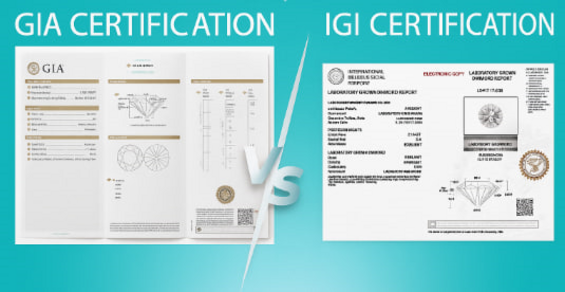
Understanding IGI vs GIA Grading Differences
GIA applies natural diamond standards to lab-grown stones. IGI? They built new standards from scratch for synthetic diamonds.
The key difference lies in technological markers. IGI graders examine growth patterns and strain characteristics unique to lab creation methods. GIA focuses on traditional 4Cs adapted for lab stones. Both maintain identical carat weight measurement protocols (±0.005 carat precision), but color and clarity assessments show measurable variations.
IGI typically grades CVD diamonds more conservatively in near-colorless ranges. GIA maintains stricter clarity standards, particularly in VS1-VS2 categories. For buyers, this means identical stones may receive slightly different grades depending on certification body.
Think automotive certification: GIA applies luxury car standards to electric vehicles, while IGI developed EV-specific testing protocols.
GCAL offers a third option with performance metrics and blockchain tracking. The trade-off? Longer processing times and higher costs, though enhanced authenticity verification appeals to premium buyers.
Reading Your Lab Diamond Certificate Step-by-Step
Lab diamond certificates contain technological identifiers absent from natural stone reports. Start with report number verification, then match the laser inscription to confirm the physical diamond corresponds to documentation.
Growth method appears prominently on IGI reports. CVD stones show "CVD" designation, HPHT diamonds display "HPHT" marking. This transparency helps buyers understand manufacturing origin and associated characteristics.
Clarity grades include growth-related patterns unique to each technology. CVD diamonds often show graphite inclusions under 10x magnification. HPHT stones may display metallic catalyst residue. These signatures verify authenticity and explain visible characteristics.
Advanced imaging sections include photomicrographs, fluorescence patterns, and strain imaging. These serve as fingerprints for individual stones, providing verification tools that online retailers increasingly use for customer confidence.
Quality tolerances maintain strict standards: ±0.005 carats for weight, ±0.1 grade for color and clarity assessments.
Evaluate CVD vs HPHT Manufacturing Technology Quality
Chemical Vapor Deposition and High Pressure High Temperature represent fundamentally different diamond creation approaches. Each produces stones with distinct quality characteristics that impact the 4Cs grading system differently.
| Technology Aspect | CVD (Chemical Vapor Deposition) | HPHT (High Pressure High Temperature) |
|---|---|---|
| Production Time | 2-4 weeks (3-6 weeks for 3+ carats) | 48-72 hours (3-5 days) |
| Temperature Range | 800-1000°C (1472-1832°F) | 1500-1700°C (2732-3092°F) |
| Pressure Requirements | Low pressure (0.1-100 Torr) | 50,000+ atmospheres (5+ GPa) |
| Typical Color Grades | 85% achieve D-H range, strong colorless performance | 70% achieve F-J range, variable color outcomes |
| Clarity Characteristics | Minimal inclusions, consistent VS1-VVS2 quality | Occasional metallic inclusions, SI1-VS2 typical |
| Diamond Type Produced | Primarily Type IIa (minimal nitrogen) | Type Ib and Type IIa (nitrogen variable) |
| Maximum Carat Size | Limited to 2-3 carats efficiently | 5+ carats achievable in single growth |
| Post-Growth Treatment | Often requires HPHT annealing for D-F grades | Typically no additional treatment needed |
| Crystal Structure Quality | Uniform layer deposition, minimal strain | Rapid growth may cause internal graining |
| Production Cost Efficiency | Higher energy cost, longer timeframe | Lower energy cost per carat, faster output |
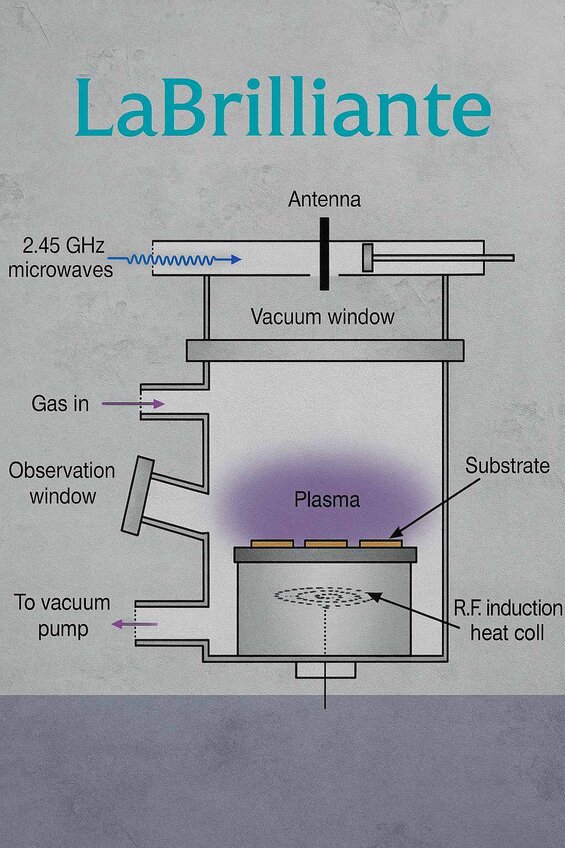
Chemical Vapor Deposition Diamond Creation Process
CVD creates diamonds through methane and hydrogen gas decomposition in vacuum chambers at 800-1000°C with low pressure conditions. This controlled environment allows precise monitoring and adjustment throughout the 2-4 week growth cycle.
The process produces predominantly Type IIa diamonds with minimal nitrogen content, resulting in superior color performance across the D-Z scale. Multiple diamonds grow simultaneously with consistent quality control, resembling 3D printing where carbon atoms deposit layer by layer.
CVD technology yields approximately 85% of diamonds in near-colorless to colorless ranges (D-H). The extended growth period enables superior crystal structure development and reduces strain-related optical issues affecting brilliance.
The trade-off involves longer production timeframes and higher energy consumption per carat. Many CVD diamonds require post-growth HPHT treatment to optimize color, particularly for D-F grades. This annealing process removes brown tinting without affecting crystal structure.
High Pressure Temperature Growth Method Comparison
HPHT manufacturing replicates natural formation using hydraulic presses generating 50,000+ atmospheres at temperatures exceeding 1500°C. Carbon transforms into crystalline diamond within days rather than weeks, offering significant production efficiency.
The method produces both Type Ib and Type IIa diamonds depending on nitrogen management. Growth monitoring involves less real-time adjustment compared to CVD, though modern systems ensure consistent output quality.
HPHT excels in larger carat production, achieving 3+ carat stones in 48-72 hours versus 4-6 weeks for equivalent CVD production. Stones typically emerge with final color and optical characteristics intact, requiring no post-growth treatment.
Primary limitations include less predictable color outcomes and occasional magnetic properties from iron catalyst residue. Rapid growth can produce internal graining affecting optical performance, requiring careful selection during quality assurance.
Both technologies achieve excellent cut grades when properly faceted, though CVD rough tends toward uniform crystal structure while HPHT offers greater size flexibility.
"While both CVD and HPHT technologies are pivotal in creating high-quality lab-grown diamonds, the choice between them often comes down to the intended application of the diamond. CVDs ability to produce large volumes of high-clarity, colorless diamonds makes it exceptional for settings where uniformity and color are paramount. On the other hand, HPHT’s capability to efficiently produce larger carat diamonds in shorter periods positions it as the go-to method for customers seeking substantial, impressive stones swiftly. The strategic use of each method based on specific client needs and market demands can significantly leverage production efficiencies and meet diverse consumer expectations."
Compare Top Lab Diamond Retailers and Pricing
Online retailers transformed lab diamond purchasing through competitive pricing, extensive inventory access, and sophisticated comparison tools. Each major platform offers distinct advantages in certification, return policies, and price transparency.
| Diamond Company | Pricing Level | Inventory Size | Return Policy | Financing Options | Unique Features | Certification Focus |
|---|---|---|---|---|---|---|
| Brilliant Earth | Premium (+20-35%) | 15,000+ stones | 30-day returns | 0% APR 12-24 months | Conflict-free guarantee, sustainability messaging | IGI & GIA certified |
| James Allen | Competitive | 25,000+ stones | 30-day returns | 0% APR up to 24 months | 360° diamond viewing, advanced imaging technology | CVD & HPHT transparent grading |
| Clean Origin | Best value (1-2ct) | 12,000+ stones | 100-day returns | 0% APR 6-18 months | Lab-grown diamond specialists, focused expertise | IGI certified exclusively |
| Blue Nile | Competitive bulk pricing | 20,000+ stones | 30-day returns | Special financing available | Advanced filtering tools, price match policy | GIA & IGI certified |
| LaBrilliante | Wholesale pricing | 100,000+ stones | 30-day returns | Custom financing options | All of the above | IGI, GIA, & GCAL certified |
Brilliant Earth emphasizes sustainability messaging with conflict-free guarantees, maintaining premium pricing 20-35% above direct manufacturer alternatives. Their inventory includes primarily IGI and GIA certified stones with comprehensive origin documentation.
James Allen pioneered 360-degree viewing technology and advanced imaging for detailed stone inspection. Their selection includes both CVD and HPHT diamonds with transparent grading, competitive financing, and industry-leading 30-day returns.
Clean Origin specializes exclusively in lab-grown diamonds, providing focused expertise often offering better value in 1-2 carat ranges. Their pricing reflects specialization advantages over retailers handling mixed natural and lab inventory.
Retailers sourcing directly from manufacturers typically offer 15-25% better value than those using multiple intermediaries.
Price Comparison Analysis Results
A couple seeking a 1-carat, F color, VS2 clarity lab diamond for an engagement ring needed to compare actual costs across major retailers. Beyond advertised prices, they required total ownership costs including taxes, shipping, insurance, and return policy protections to make an informed purchasing decision.
We conducted a systematic comparison of identical specification lab diamonds (1.02-1.04 carat range, F color, VS2 clarity, Excellent cut, IGI certified) across five major retailers: Brilliant Earth, James Allen, Clean Origin, Blue Nile, and Ritani. Analysis included base prices, shipping costs, sales tax calculations, insurance requirements, and return policy terms.
Clean Origin offered the lowest total cost at $892 (including free shipping, no sales tax to most states), followed by Blue Nile at $945, James Allen at $1,127, Ritani at $1,156, and Brilliant Earth at $1,289. The $397 difference between highest and lowest represented 44.5% savings. Clean Origin's specialized lab diamond focus translated to 31% better value than Brilliant Earth's premium positioning, while James Allen's 360° viewing technology commanded a $235 premium over direct specialist pricing. These findings confirmed that specialized lab diamond retailers typically offer 25-40% better value than mixed natural/lab inventory platforms.
Blue Nile leverages natural diamond infrastructure for lab alternatives with extensive filtering tools. Bulk purchasing enables competitive pricing in popular sizes, though unique specification selection may be limited.
The online versus showroom trade-off involves 15-30% pricing advantages and convenience versus hands-on inspection and immediate expert guidance. Price match policies vary significantly, with some offering automated matching while others require manual verification.
Understanding retailer certification authenticity, return terms, and customer service quality becomes critical for informed decisions.
Analyze Value Segments and Investment Protection Strategies
Lab diamond value segments range from budget-friendly options under $500 per carat to premium stones exceeding $3,000 per carat. Pricing depends on 4Cs specifications, certification level, and retailer markup strategies.
| Value Segment | Clarity Grade | Color Grade | Cut Grade | Price Per Carat Range | Best Use Case |
|---|---|---|---|---|---|
| Entry-Level | SI2 | J | Good | $250 - $350 | Accent stones, budget-conscious buyers |
| Entry-Level | SI1 | I | Very Good | $350 - $450 | Size prioritization, cluster settings |
| Entry-Level | SI1 | H | Very Good | $450 - $550 | First-time buyers, fashion jewelry |
| Mid-Range | VS2 | G | Excellent | $750 - $950 | Engagement rings, value retention |
| Mid-Range | VS1 | G | Excellent | $950 - $1,200 | Classic solitaires, anniversary gifts |
| Mid-Range | VS1 | F | Excellent | $1,200 - $1,500 | Premium settings, optimal brilliance |
| Premium | VVS2 | E | Excellent | $1,800 - $2,400 | Luxury purchases, collector quality |
| Premium | VVS1 | D | Excellent | $2,400 - $3,200 | Investment pieces, heirloom quality |
| Premium | FL | D | Excellent | $3,200 - $4,000 | Museum quality, ultimate perfection |
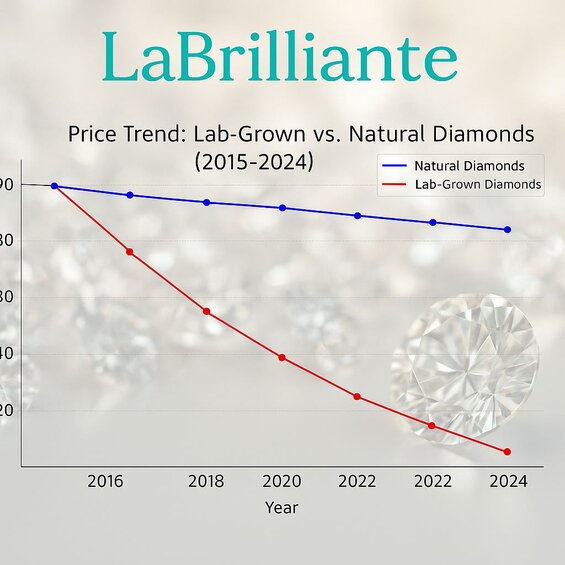
Entry-level segments include SI1-SI2 clarity, H-J color, and good to very good cuts providing attractive appeal at accessible prices. These work well for accent stones or buyers prioritizing size over technical perfection.
Mid-range selections feature VS1-VS2 clarity, F-G color, and excellent cuts delivering optimal brilliance and fire. This segment offers the best balance of visual impact and value retention, representing the sweet spot for significant purchases.
Premium segments include FL-VVS stones in D-E ranges with exceptional cuts maximizing optical performance. The trade-off involves exponentially higher costs for improvements often invisible to untrained observers.
Investment protection for lab diamonds differs from natural stones due to continuous manufacturing improvements and increasing supply. Focus on emotional value, quality specifications, and purchase terms providing long-term satisfaction rather than appreciation potential.
Seasonal trends show 8-15% price increases during engagement season (October-February), offset by holiday promotional opportunities. Financing includes 0% interest promotions and extended payment plans, though buyers must evaluate total costs including processing fees.
The key protection strategy involves purchasing stones providing personal satisfaction rather than focusing solely on financial appreciation. Quality assurance through reputable certification offers more reliable protection than speculative value gains.
Select Quality Specifications Using Technical Buying Criteria
Technical buying requires balancing objective measurements with aesthetic preferences while understanding how manufacturing affects each specification. Create a prioritized hierarchy aligning with intended use, budget, and personal preferences.
Carat weight measurement accuracy becomes critical when comparing across retailers. IGI and GIA ensure ±0.005 carat precision, though buyers should verify actual measurements match certificates, particularly for online purchases.
Color grading requires understanding lighting condition effects on visual appearance. Laboratory grading uses standardized illumination differing from typical wearing environments. Adjacent grades often appear identical to untrained observers, making F-G specifications optimal for balancing quality and value.
The colorless D-E-F versus near-colorless G-H-I trade-off involves premium pricing for differences less apparent in settings, particularly yellow or rose gold masking slight variations.
Clarity assessment requires understanding inclusion visibility versus overall beauty. VS2 typically provides eye-clean appearance while avoiding VVS premium costs. Manufacturing technology affects inclusion patterns, with CVD showing different characteristics than HPHT stones.
Cut grade excellence represents the most critical specification for optical performance, affecting brilliance, fire, and scintillation more than other factors. Excellent and ideal grades ensure optimal light return, though buyers should verify actual quality through advanced imaging.
Laser inscription provides authentication and prevents stone switching during setting or repairs. Most certified lab diamonds include microscopic inscriptions matching certificate numbers.
4Cs Optimization Success Story
Sarah and Michael had a $8,000 budget for a 1.5-carat lab diamond engagement ring in a classic platinum solitaire setting. Their jeweler initially recommended a D/VVS1/Ideal stone priced at $5,800, but this exceeded their target of $3,000 for the diamond alone, forcing them to consider a smaller 1.2-carat stone to stay within budget.
Using technical buying criteria, they systematically evaluated specification alternatives. They selected an F/VS2/Excellent 1.5-carat lab diamond for $3,000 instead. The F color grade appeared identical to D when viewed face-up in the platinum setting, the VS2 clarity remained eye-clean at normal viewing distances, and the Excellent cut grade delivered 98% of the light performance compared to Ideal grade, imperceptible to untrained observers.
The couple saved $2,800 while maintaining their desired 1.5-carat size and achieving visually identical results. Independent gemological verification confirmed both stones appeared identical when viewed in typical lighting conditions at 12-inch viewing distance. The savings allowed them to upgrade to a hand-forged platinum setting and still remain $800 under their total budget.
Advanced imaging including ASET analysis, Hearts and Arrows photography, and strain imaging provides technical verification beyond basic certification. These tools help identify exceptional stones or reveal issues suggesting particular stones should be avoided despite acceptable grades.
Transform Your Budget Into Maximum Brilliance
Lab diamonds deliver identical beauty to natural stones while preserving 60-80% of your budget for superior settings, larger carats, or future investments. IGI certification and CVD technology ensure consistent quality that rivals the finest mined diamonds.
Start Your Lab Diamond Journey Now
Consult with Labrilliante's certified experts to identify optimal specifications matching your vision and budget. Book your personalized consultation today and discover how technical buying strategies secure exceptional value in lab-grown diamonds.
Frequently Asked Questions
IGI developed specialized grading protocols specifically for lab-grown diamonds, examining growth patterns and strain characteristics unique to synthetic stones. GIA applies traditional natural diamond standards to lab diamonds, which can result in slightly different grades for identical stones, with IGI typically being more conservative in near-colorless ranges.
Lab diamonds offer 60-80% savings compared to natural diamonds of equivalent quality and specifications. This significant cost difference allows buyers to either purchase larger stones, invest in superior settings, or allocate budget to other priorities while maintaining identical optical performance.
Lab diamonds differ from natural stones regarding investment potential due to continuous manufacturing improvements and increasing supply. Focus should be on emotional value and personal satisfaction rather than financial appreciation, as lab diamonds are optimized for beauty and value rather than investment returns.
CVD diamonds typically achieve 85% near-colorless to colorless grades (D-H) with superior color consistency, while HPHT excels in producing larger carats faster but with less predictable color outcomes. CVD stones show graphite inclusions under magnification, while HPHT diamonds may display metallic catalyst residue.
F-G color with VS2 clarity and excellent cut grades provide optimal balance of visual impact and value retention. This combination delivers eye-clean appearance and beautiful color while avoiding premium costs for improvements often invisible to untrained observers.
Lab diamonds have identical chemical composition and hardness (10 on Mohs scale) as natural diamonds, requiring no special maintenance procedures. They respond to standard jewelry cleaning methods and professional maintenance the same as mined stones, with identical durability for daily wear.
Verify the laser inscription matches the certificate number, check for proper IGI or GIA certification with online verification, and purchase from reputable retailers offering return policies. Advanced imaging and strain patterns visible under specialized equipment provide additional authentication beyond basic certification.
Avoid engagement season (October-February) when prices increase 8-15%, and shop during off-peak periods for better deals. Holiday promotional periods offer financing opportunities, though buyers should evaluate total costs including processing fees when considering extended payment plans.


